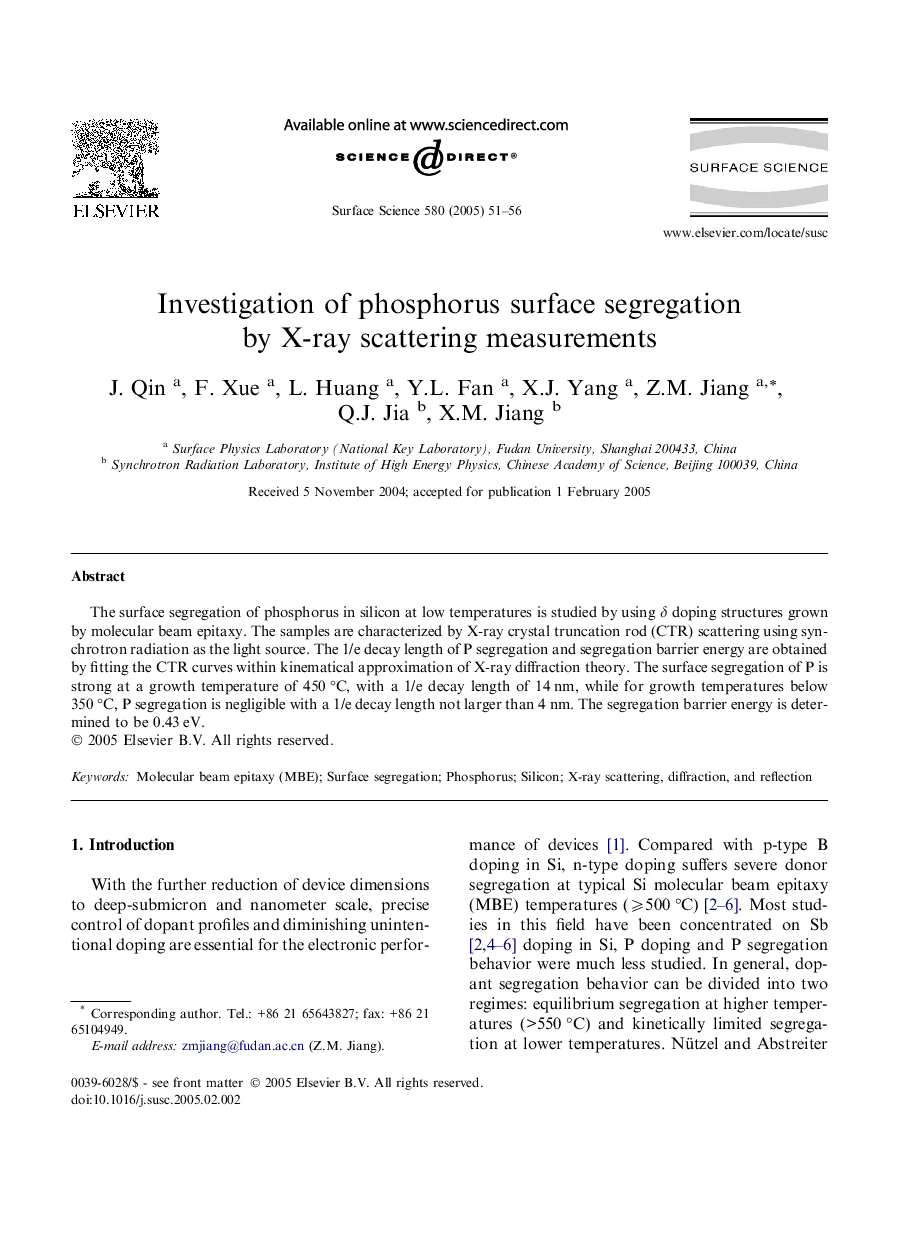| Article ID | Journal | Published Year | Pages | File Type |
|---|---|---|---|---|
| 9595579 | Surface Science | 2005 | 6 Pages |
Abstract
The surface segregation of phosphorus in silicon at low temperatures is studied by using δ doping structures grown by molecular beam epitaxy. The samples are characterized by X-ray crystal truncation rod (CTR) scattering using synchrotron radiation as the light source. The 1/e decay length of P segregation and segregation barrier energy are obtained by fitting the CTR curves within kinematical approximation of X-ray diffraction theory. The surface segregation of P is strong at a growth temperature of 450 °C, with a 1/e decay length of 14 nm, while for growth temperatures below 350 °C, P segregation is negligible with a 1/e decay length not larger than 4 nm. The segregation barrier energy is determined to be 0.43 eV.
Keywords
Related Topics
Physical Sciences and Engineering
Chemistry
Physical and Theoretical Chemistry
Authors
J. Qin, F. Xue, L. Huang, Y.L. Fan, X.J. Yang, Z.M. Jiang, Q.J. Jia, X.M. Jiang,
